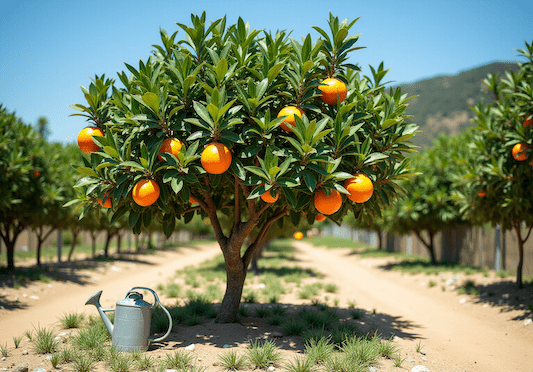
How to Grow a Healthy Shiranui Mandarin Tree
Share
Cultivating a Shiranui mandarin tree can be a rewarding endeavor, offering not only delicious fruit but also a beautiful addition to any garden. Understanding the unique growing conditions and care requirements for this vibrant citrus variety is essential for success.
To successfully plant and nurture a thriving Shiranui mandarin tree, it is crucial to know the key steps involved in its care.
🍊 Thinking about growing a Mandarin Tree in your garden?
Explore Shiranui Mandarin Tree for sale at Everglades Farm - shipped directly from Florida.
1. Understand the Growing Conditions for Shiranui Mandarin Trees
Mandarin plants thrive best in well-draining soil with a slightly acidic to neutral pH, ideally ranging from 5.8 to 6.5. These trees require full sun exposure, needing at least six hours of direct sunlight each day to flourish. It is crucial to select a location that is shielded from strong winds and extreme cold, as the shiranui mandarin tree is particularly sensitive to frost. The optimal growing conditions for the shiranui mandarin tree include warm summers and mild winters, making subtropical climates especially suitable for its cultivation.
Consistent irrigation is essential, particularly during arid conditions, to keep the soil damp without saturating the roots. Before irrigating, it is important to check the ground moisture to prevent over-saturation. To ensure that your soil meets these requirements, prior to planting is highly recommended. This proactive measure can help establish the ideal environment for your Mandarin plant to thrive.
As horticulturist Zack Snipes emphasizes, safeguarding the graft union is vital for maintaining plant health during cold spells. Additionally, Mandarin varieties can tolerate temperatures as low as 20°F for brief periods, which contributes to their overall durability. By following these guidelines, you can create the perfect conditions for your shiranui mandarin trees to flourish.
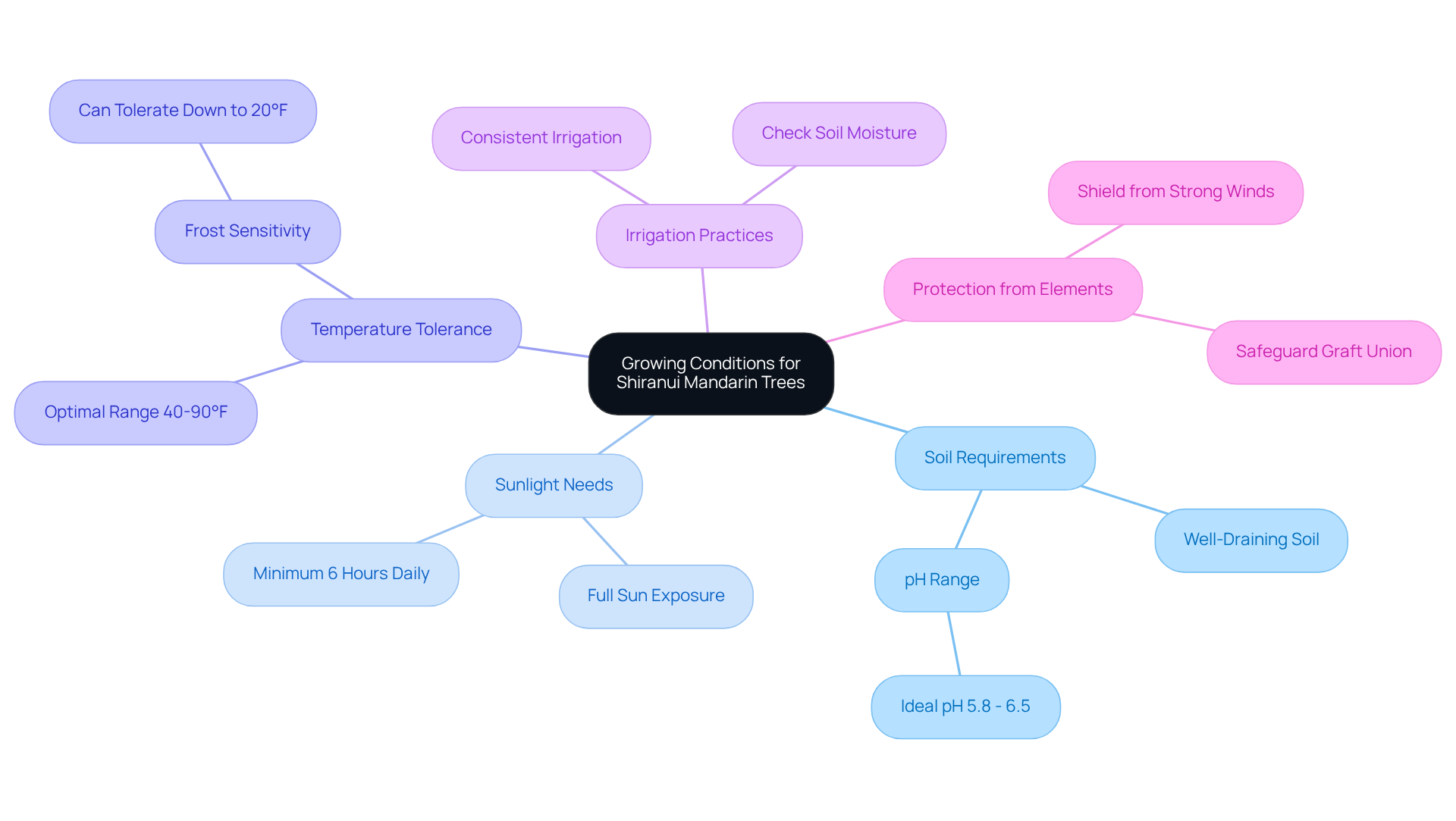
2. Plant the Shiranui Mandarin Tree Properly
To successfully plant your Shiranui Mandarin tree, follow these essential steps:
- Choose the Right Time: The optimal planting period is in spring or early summer, after the threat of frost has passed. This timing ensures a favorable start for your plant, allowing it to thrive.
- Prepare the Planting Hole: Dig a hole that is 1.5 to 2 times the . This preparation promotes adequate development of the base and creates a solid groundwork for growth.
- Place the Tree: Gently position the tree in the hole, ensuring that the top of the root ball is level with the surrounding soil. Avoid planting too deeply, as this can suffocate the roots and hinder growth. The upper part of the ball should be covered with no more than 1 inch of soil.
- Backfill and Water: Fill the hole with soil, gently tamping it down to eliminate air pockets. After planting, water the area thoroughly, soaking the entire surrounding soil—not just the base—to help settle the soil around the roots. Creating a watering ring around the base can aid in moisture retention.
- Mulch: Apply a layer of mulch around the base of the plant to conserve moisture and suppress weeds. Ensure the mulch is kept a few inches away from the trunk to prevent rot and promote healthy growth.
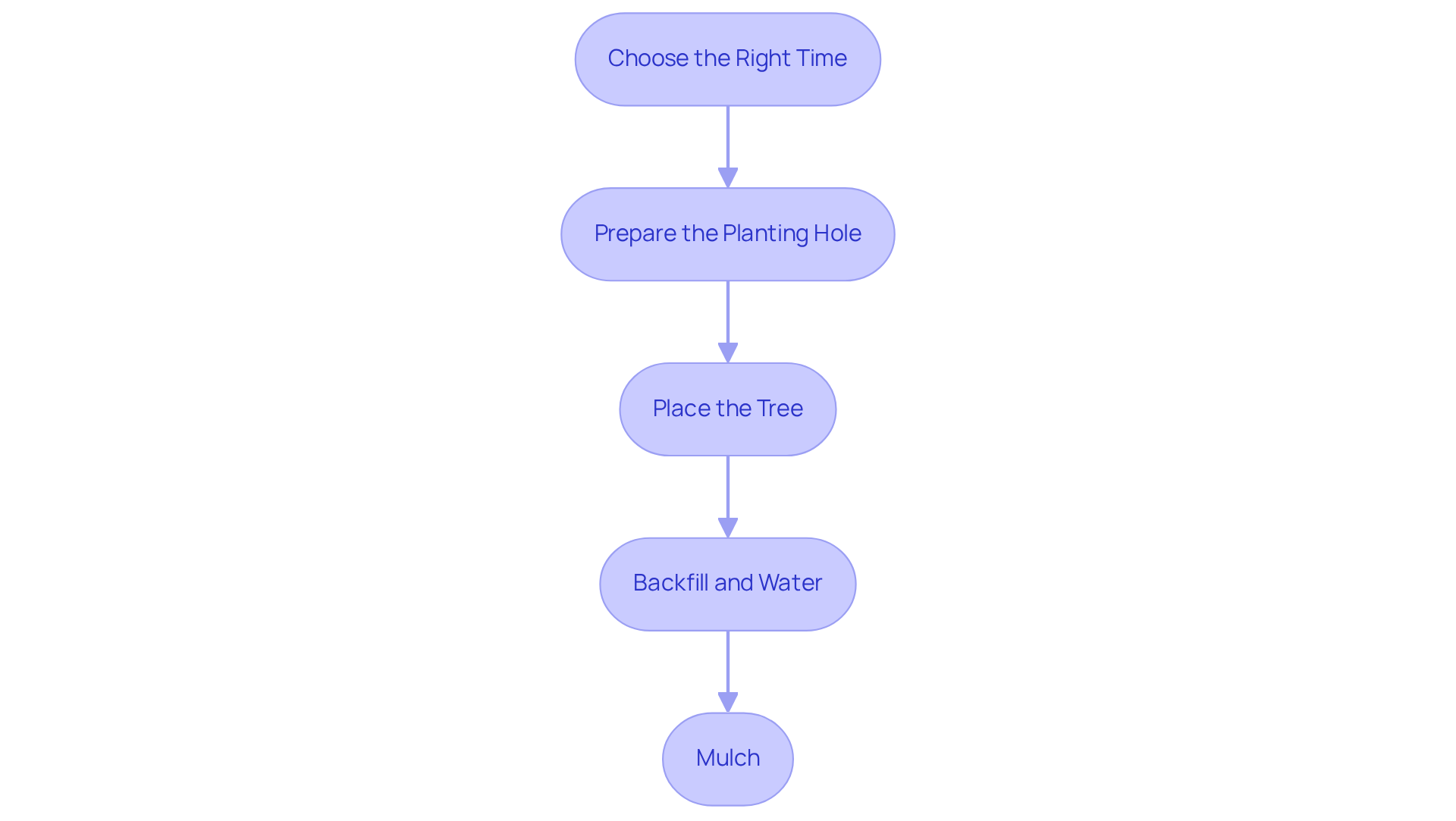
3. Maintain and Care for Your Shiranui Mandarin Tree
To effectively maintain and care for your Shiranui Mandarin tree, consider the following guidelines:
- Watering: It is essential to provide thorough moisture to the plant once a week, allowing the upper few inches of soil to dry out between applications. During hot, dry spells, you may need to increase the frequency of watering. Adjusting your watering routine according to seasonal variations is crucial, as plants require different amounts of water throughout the year.
- Fertilization: Utilize a slow-release fertilizer specifically formulated for the shiranui mandarin tree. Apply this fertilizer three times a year: in late winter, late spring, and early fall. Adhering to the manufacturer's guidelines for the proper dosage is vital to prevent over-fertilization, which can adversely affect the health of the shiranui mandarin tree. Excessive fertilizer application can lead to nutrient imbalances and attract pests.
- Pruning: Pruning the shiranui mandarin tree each year in late winter is essential to remove any dead or diseased branches and to shape it appropriately. This practice promotes better air circulation and sunlight penetration, both of which are essential for healthy growth and fruit production.
- Pest management: Pest management for your shiranui mandarin tree includes regularly inspecting it for pests such as aphids and scale insects. If any pests are detected, treat them using insecticidal soap or neem oil. Maintaining good hygiene around the plant is also beneficial in preventing infestations. Additionally, ensuring nutritious ground through regular assessments can significantly enhance your plant's resistance to pests.
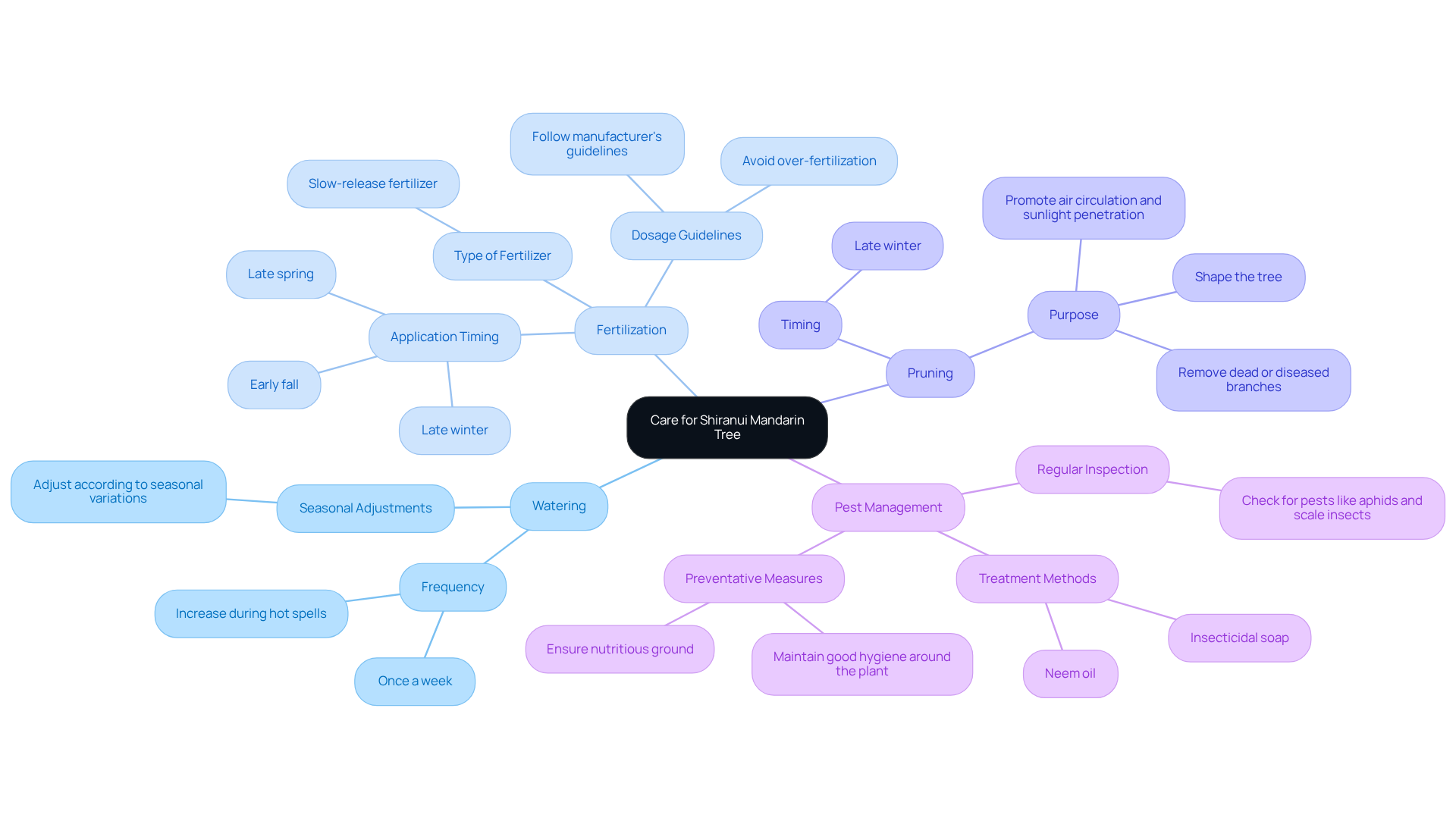
4. Troubleshoot Common Issues in Growing Shiranui Mandarin Trees
Common issues you may encounter while growing the shiranui mandarin tree include several key factors that can impact its health and productivity.
- Yellowing Leaves: Yellowing leaves can indicate a nitrogen deficiency. To correct this issue, fertilize your tree with a nitrogen-rich fertilizer, which will help restore the vibrancy of the foliage and promote healthy growth.
- Leaf Drop: If you notice leaves dropping from your tree, it may be due to improper watering practices, either overwatering or underwatering. To address this, check the ground moisture regularly and adjust your watering schedule accordingly to maintain optimal soil conditions.
- Pest Infestations: Keep an eye out for signs of pests, such as aphids or spider mites, which can severely damage your plants. Treat any infestations promptly with to safeguard your trees and ensure they remain healthy.
- Poor fruit production can occur if your Shiranui mandarin tree is not receiving adequate sunlight or nutrients. Ensure that your tree gets at least six hours of direct sunlight each day and consider adjusting your fertilization routine to enhance fruit production.
- Root Rot: Root rot is a common issue that occurs in excessively moist soil. To prevent this, ensure that your tree is planted in well-draining soil and adjust your watering habits to avoid waterlogging, which can lead to significant root damage.
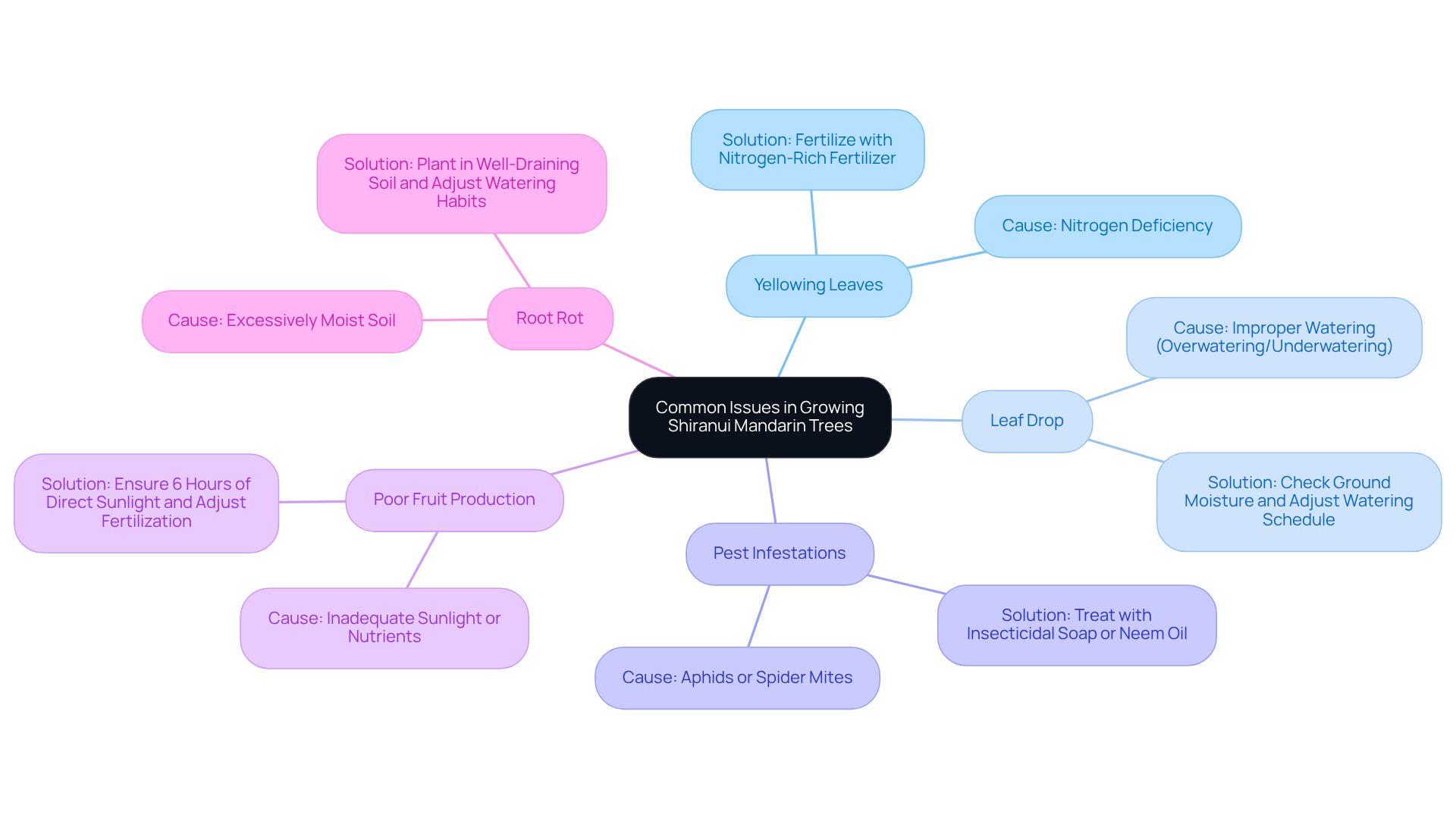
Conclusion
Growing a healthy Shiranui mandarin tree necessitates a thorough understanding of its specific requirements and proper care practices. By creating the right environment and adhering to essential planting and maintenance steps, anyone can cultivate a flourishing tree that produces delicious fruit.
Central to the successful growth of Shiranui mandarins is the establishment of optimal conditions, which include:
- Well-draining soil
- Sufficient sunlight
- Consistent watering
Implementing proper planting techniques—such as digging an appropriately sized hole and applying mulch—is crucial for laying a strong foundation. Furthermore, regular maintenance activities, including:
- Fertilization
- Pruning
- Pest management
are vital for sustaining the tree's health and enhancing its productivity.
Ultimately, the journey of cultivating a Shiranui mandarin tree is both rewarding and educational. By applying the insights shared, individuals can not only relish the fruits of their labor but also contribute to the sustainability of their gardening practices. Adopting these guidelines will lead to a thriving tree and a delightful harvest that can be enjoyed for years to come.
Grow Your Own Shiranui Mandarins Today!
Start your gardening journey with high-quality trees from Everglades Farm and savor the rewards of homegrown fruit.
🛒 Buy Shiranui Mandarin Tree
🍊 Explore all mandarin trees for sale
Frequently Asked Questions
What are the ideal soil conditions for Shiranui mandarin trees?
Shiranui mandarin trees thrive in well-draining soil with a slightly acidic to neutral pH, ideally between 5.8 and 6.5.
How much sunlight do Shiranui mandarin trees need?
These trees require full sun exposure, needing at least six hours of direct sunlight each day to flourish.
What climate is best for growing Shiranui mandarin trees?
The optimal growing conditions include warm summers and mild winters, making subtropical climates especially suitable for their cultivation.
How should I manage irrigation for Shiranui mandarin trees?
Consistent irrigation is essential, particularly during arid conditions, to keep the soil damp without saturating the roots. It is important to check the ground moisture before irrigating to prevent over-saturation.
Why is it recommended to conduct a soil test before planting Shiranui mandarin trees?
Conducting a soil test prior to planting is highly recommended to ensure that the soil meets the necessary requirements for the Mandarin plant to thrive.
What precautions should be taken during cold spells for Shiranui mandarin trees?
Safeguarding the graft union is vital for maintaining plant health during cold spells, as the trees are sensitive to frost.
What temperatures can Shiranui mandarin trees tolerate?
Mandarin varieties can tolerate temperatures as low as 20°F for brief periods, contributing to their overall durability.


